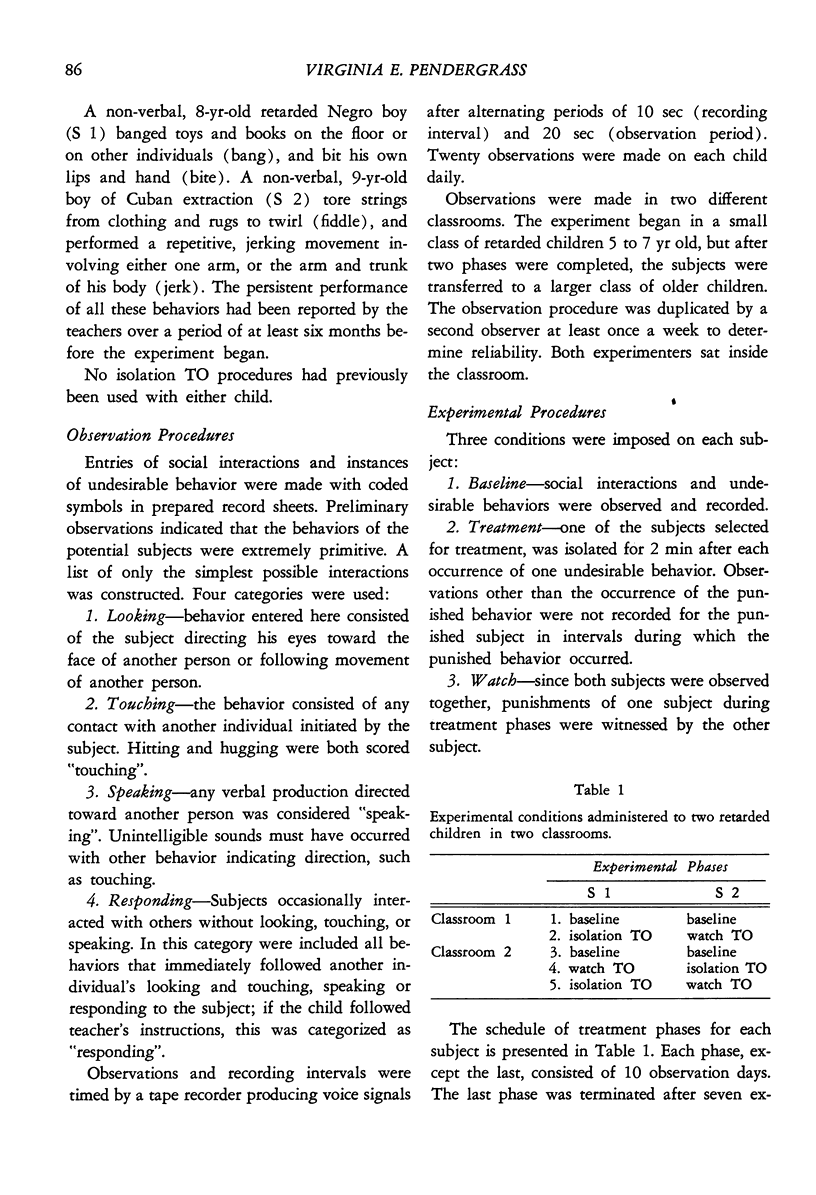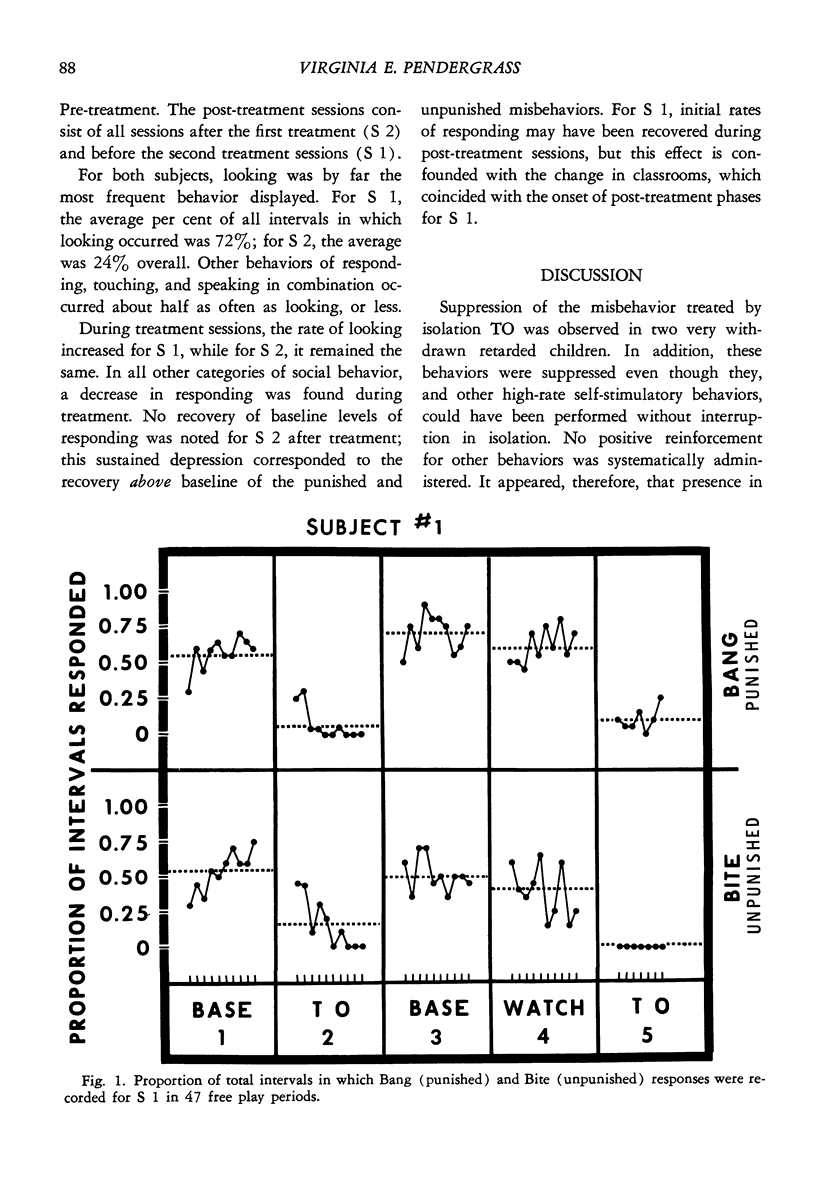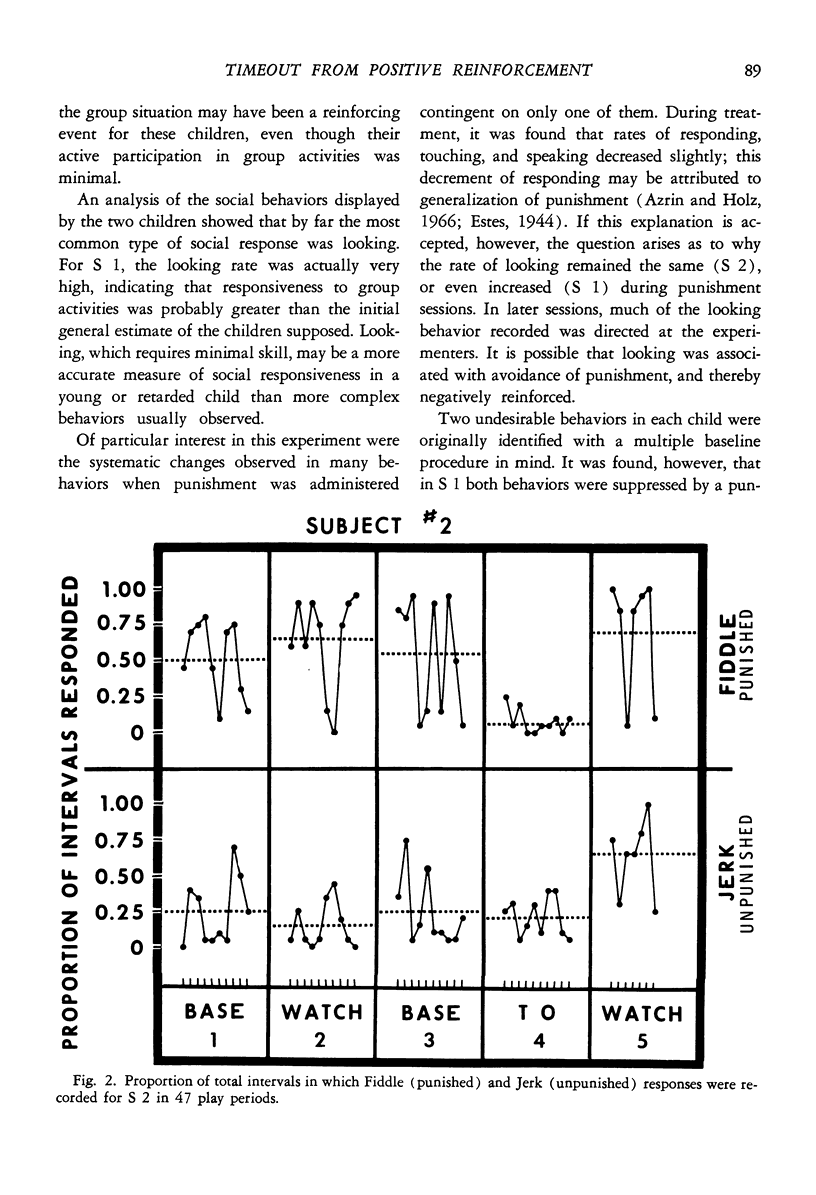Abstract
Brief isolation from a group situation was found to suppress persistent, high-rate misbehavior in two extremely withdrawn children, even though no positive reinforcement for other behaviors was systematically administered. Changes in a variety of behaviors, including looking, touching, speaking, responding, and other non-punished misbehaviors, were observed when isolation timeout was administered contingent on only one misbehavior of each child.
Full text
PDF






Selected References
These references are in PubMed. This may not be the complete list of references from this article.
- BURCHARD J., TYLER V., Jr THE MODIFICATION OF DELIQUENT BEHAVIOR THROUGH OPERANT CONDITIONING. Behav Res Ther. 1965 Apr;3:245–250. doi: 10.1016/0005-7967(65)90033-1. [DOI] [PubMed] [Google Scholar]
- Hewett F. M. Teaching speech to an autistic child through operant conditioning. Am J Orthopsychiatry. 1965 Oct;35(5):927–936. doi: 10.1111/j.1939-0025.1965.tb00472.x. [DOI] [PubMed] [Google Scholar]
- Tyler V. O., Jr, Brown D. The use of swift, brief isolation as a group control device for institutionalized delinquents. Behav Res Ther. 1967 Feb;5(1):1–9. doi: 10.1016/0005-7967(67)90050-2. [DOI] [PubMed] [Google Scholar]
- Zeilberger J., Sampen S. E., Sloane H. N. Modification of a child's problem behaviors in the home with the mother as therapist. J Appl Behav Anal. 1968 Spring;1(1):47–53. doi: 10.1901/jaba.1968.1-47. [DOI] [PMC free article] [PubMed] [Google Scholar]


